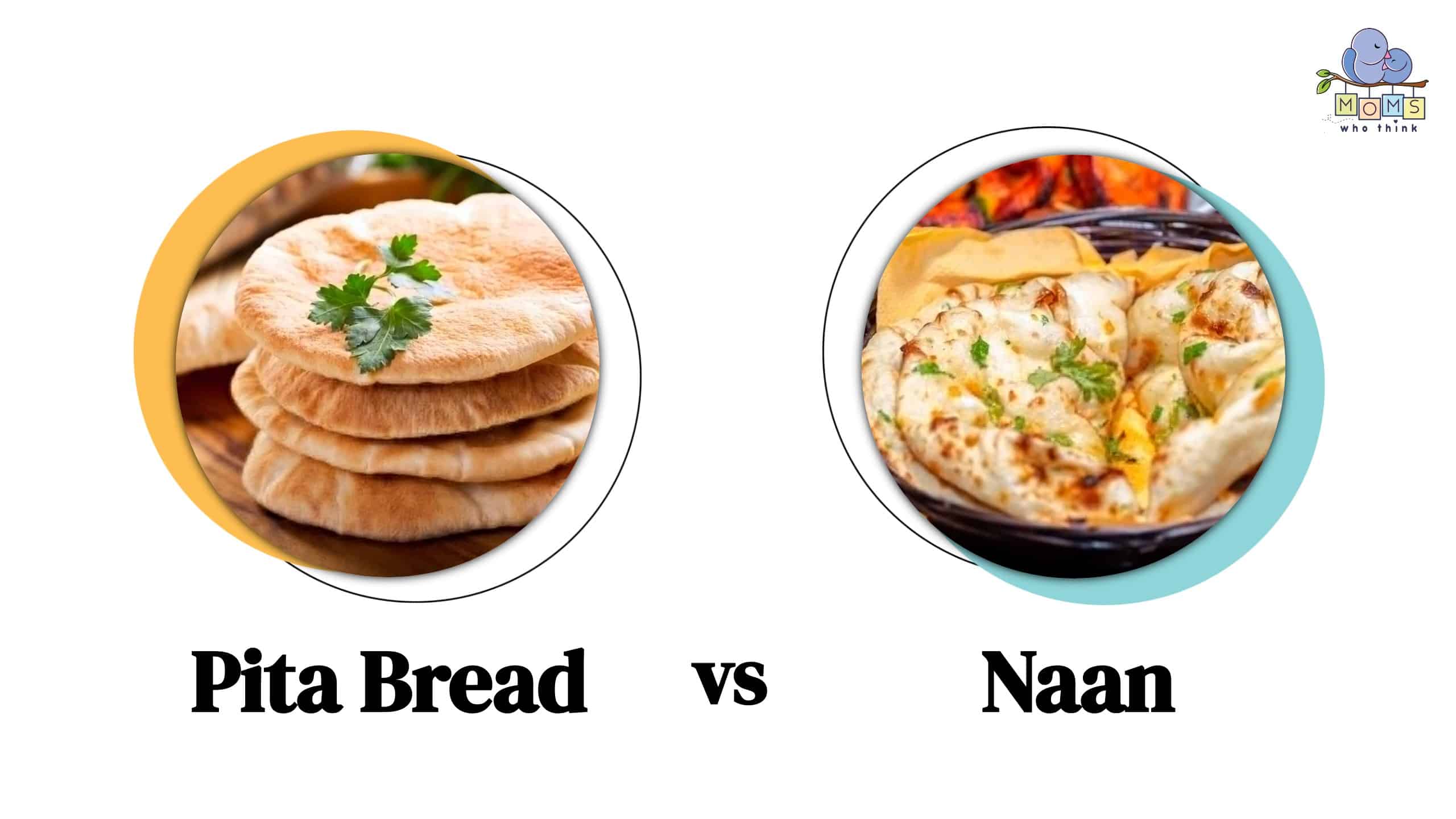One has a pocket that makes it perfect for stuffing while the other has a rich, chewy texture with a buttery flavor. These two types of bread may have some of the same basic ingredients but once prepared, you realize just how different they are. Discover six key differences between pita bread and naan. Plus, learn how to make each at home!
Pita Bread vs. Naan: 6 Key Differences
| Pita Bread | Naan | |
|---|---|---|
| Origin | Middle East and Mediterranean regions | South Asian regions |
| Texture and Flavor | Thin bread with an inner pocket for stuffing; neutral flavor profile | Rich, thick, and chewy; buttery flavor |
| Ingredients | Flour, yeast, water, salt, olive oil, and sometimes sugar | Flour, yeast, water, milk, egg, butter, and sometimes sugar |
| Leavening Agents | Yeast | Yeast and other agents, including baking powder |
| Nutritional Value | 170 calories, 33 grams of carbs, 6 grams of protein, and 2 grams of fat | 320 calories, 50 grams of carbohydrates, 9 grams of protein, and 9 grams of fat |
| Cooking Method | Oven-baked | Clay oven-baked |
Pita Bread vs. Naan: Origin
Although they may appear similar, each type of bread originated in different parts of the world. Pita bread is a flat bread that can be traced back to the Middle East and Mediterranean regions. Naan, on the other hand, originated in South Asian regions.
Pita Bread vs. Naan: Texture and Flavor
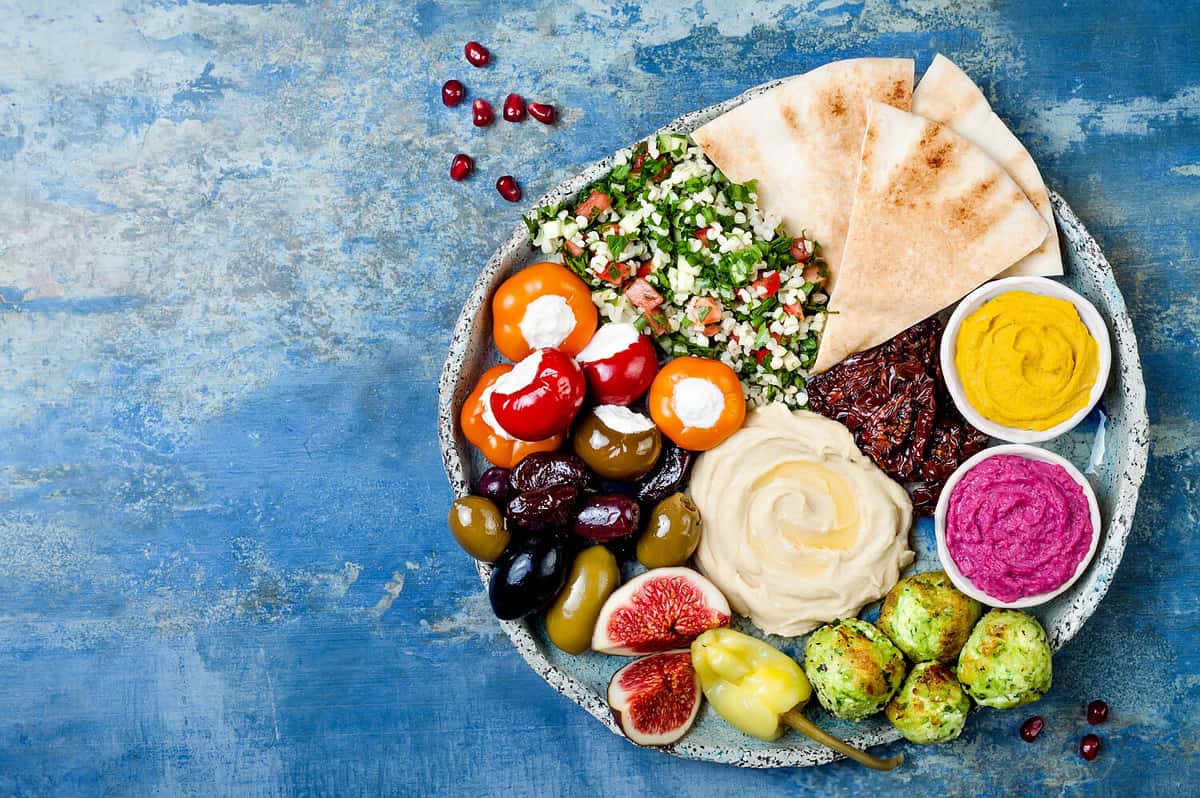
©zarzamora/Shutterstock.com
With pita bread, the texture is soft and thin. When cooked just right, a pocket naturally forms in the center, which is perfect for stuffing. The flavor of this bread is subtle and more on the neutral side, which allows the pairings you choose to shine. Naan is a thicker, fluffier bread with a buttery finish that usually includes other flavors like coriander and garlic.
Pita Bread vs. Naan: Ingredients
Both pita bread and naan require flour, warm water, yeast, and salt. However, naan also incorporates milk, egg, butter, and extra finishes.
Pita Bread vs. Naan: Leavening Agents
Each recipe may be a little different but both pita bread and naan require yeast as a leavening agent. With the pita bread recipe below, active yeast is a component. With the naan recipe, instant or rapid-rise yeast works best.
Pita Bread vs. Naan: Nutritional Value
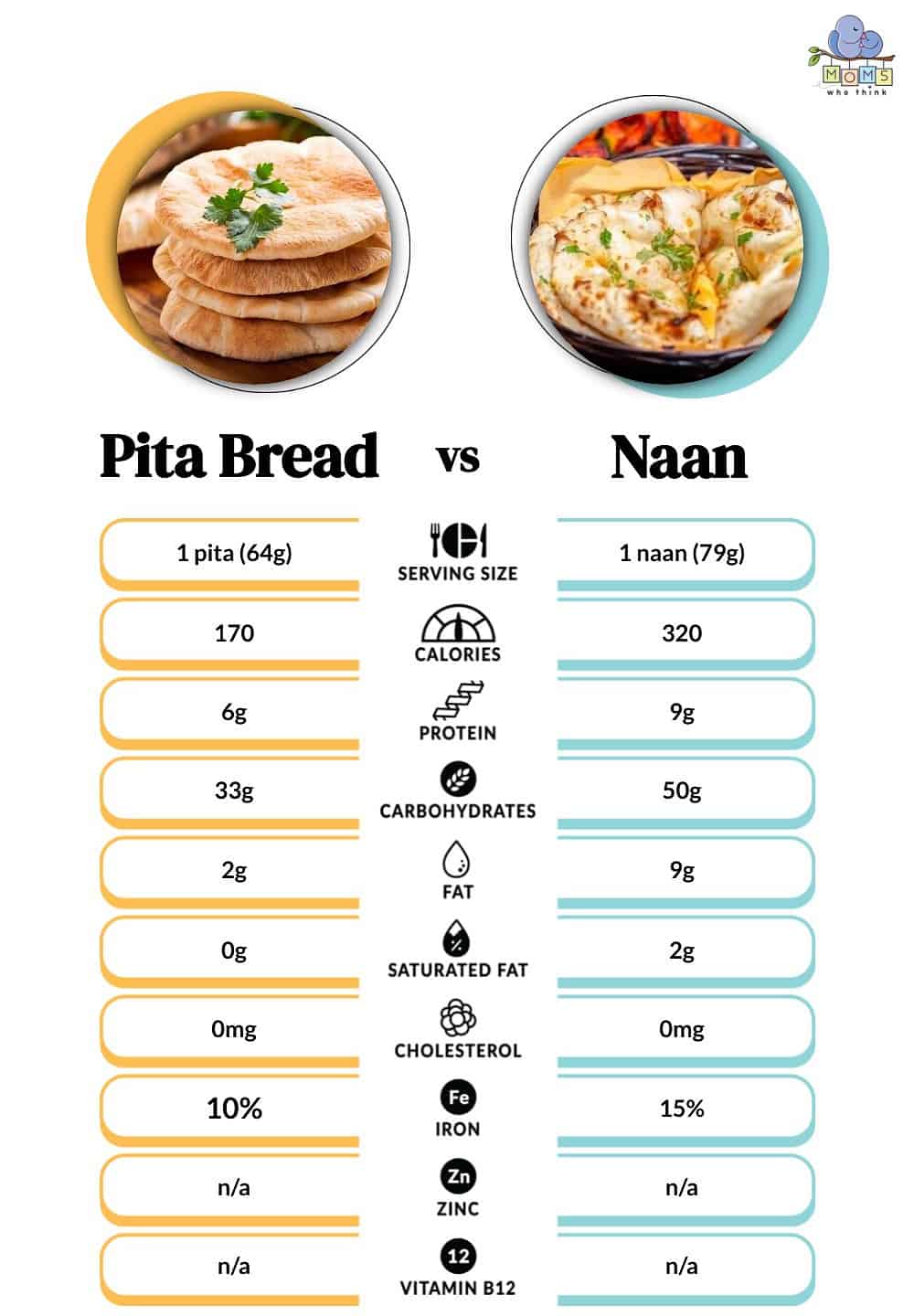
©
Naan is a richer bread, so you can expect that it’s going to be more calorie dense. Typically, one naan is 320 calories, whereas pita bread is only 170 calories. Pita bread has six grams of protein and naan has nine grams of protein. Naan has two milligrams of saturated fat while pita bread has none. You can also expect naan to be a bit more carb-heavy with 50 grams per serving compared to 33 grams per serving for pita bread.
Pita Bread vs. Naan: Cooking Method
Typically, pita bread is baked in an oven using sky-high temps. Traditionally, naan is baked in a clay oven, also known as a tandoor. This is what gives it that characteristic char and unforgettable flavor. However, as you’ll see in the recipe below, you can also use a cast iron skillet!
Pita Bread Recipe
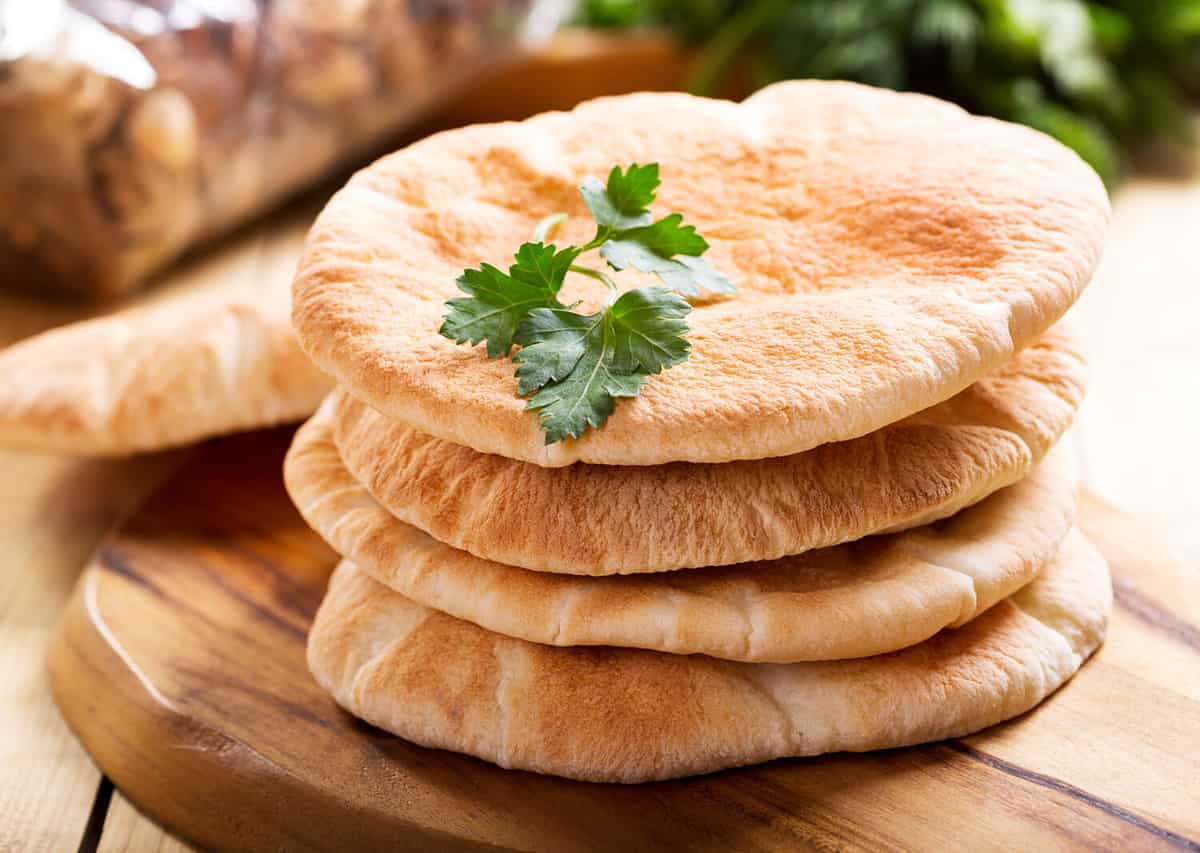
©Nitr/Shutterstock.com
Use pita bread in various ways but before you do, you need to learn how to make it. You can settle for store-bought items when you’re in a pinch but it’s worth learning how to prepare your own pita bread at home. It’s fragrant and puffy in a way that store-bought options don’t stand up to. For ingredients, all you need are the following:
- All-purpose flour (3 cups)
- Water, lukewarm (1 cup)
- Yeast, active (2 teaspoons)
- Sugar (just a pinch!)
- Extra virgin olive oil (2 tablespoons)
- Salt (2 teaspoons)
Plus, you’ll need the following kitchen tools:
- Mixing bowl
- Wooden spoon
- Rolling pin
Start in a large mixing bowl and use the wooden spoon to combine the water, yeast, and sugar. Once these ingredients are mixed in, add 1/2 cup of your all-purpose flour, and combine. Keep the mixing bowl out and let the dough rest for about 15 minutes. When you get back to it, you’ll notice the texture has become bubbly.
Once your mixture is bubbly, you can add the olive oil, the rest of your flour, and salt. Mix again. It’s going to be sticky at this point, but you can dust it with a bit of flour and start the kneading process. This shouldn’t take too long—only about a minute in the bowl and two more minutes on your working surface.
Let it rest for about 10 minutes then return to knead it a little longer until the dough shifts to a moist yet soft consistency. You’re going to need your mixing bowl again so give it a good wash and lightly coat it with olive oil. Place your soft dough inside and roll it around to coat it on all sides.
Now, you can start separating your dough to make individual pitas. This recipe should make seven or eight. Take out your rolling pin to shape your pieces of dough into flat circles. Preheat your oven to 475 degrees and once it’s ready, start baking your pitas for two minutes on each side.
Pair your pitas with whatever sounds good to you. Open the pocket to turn it into a pita sandwich, serve it alongside your favorite stew, or set it next to dips like hummus, guacamole, or spinach artichoke dip. Your options with pita bread are endless. You can stick with more traditional pairings or get as creative as you want.
Naan Recipe
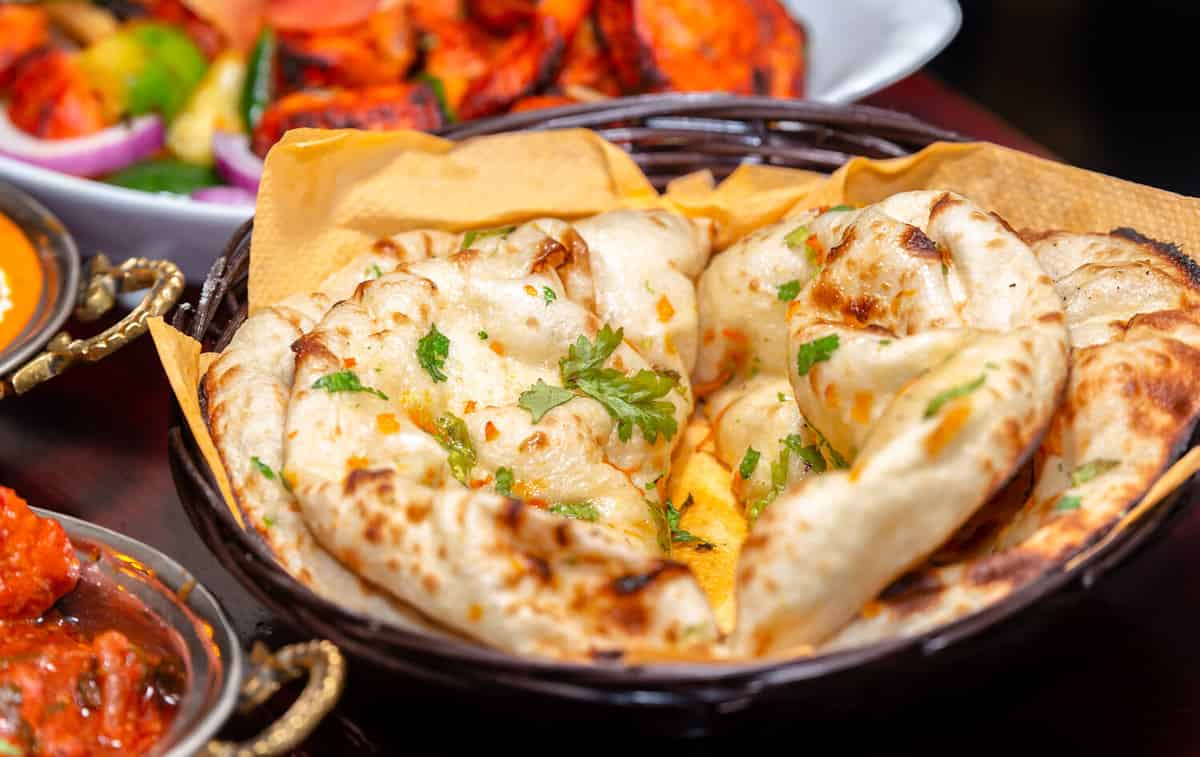
©Finn stock/Shutterstock.com
If you have a favorite Indian food spot, you know how delicious fresh naan is. You can learn to create it at home with just a few ingredients (no, you don’t need a hot tandoor). Below are the ingredients you need:
- Flour ( 1 ¾ cups)
- Yeast, rapid-rise (1 teaspoon)
- Milk (2 tablespoons)
- Butter, unsalted (2 tablespoons)
- Egg (1/2, whisked)
- Salt (1/2 teaspoon)
- Sugar, white (1 tablespoon)
- Water, warm (1/2 cup)
You’ll also need the following kitchen tools:
- Mixing bowl
- Wooden spoon
- Rolling pin
- Cast iron skillet
To start, mix the rapid-rise yeast with sugar and warm water. This step is crucial to get the kind of fluffy texture that makes naan so irresistible. Let this mixture sit for about 10 minutes. You’ll notice the texture gets foamy. Grab your mixing bowl and put both your wet and dry ingredients inside. Use a wooden spoon to mix it all together. It may get a bit too tough, so you’ll need to switch to using your hands at that point.
If it’s too sticky, dust it with a little flour. It should be soft and pliable enough for you to shape it into a ball. At this point, set it aside with cling wrap and let it rest for about 90 minutes. When you return, the dough should have doubled in size. Now, you’re ready to cut it and shape it for individual naan breads.
Let each ball rise for 15 minutes. Then, use a rolling pin to flatten it. Dust some flour on the surface you’re working on to prevent sticking. The thickness of your rolled-out naan should be about four millimeters. This precision is part of what makes this bread so delightfully fluffy.
Use a cast iron skillet to cook your naan. Set it to medium-high heat and place your naan down. You’ll see how it starts to bubble up and blister. Cook for about a minute on each side and then brush it with a little butter. You can also add coriander and crushed garlic to finish it off!
Recipe Card
Print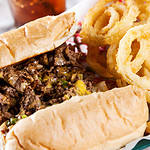
Cheesesteak Pita Pockets
Ingredients
- 1 Tablespoon vegetable oil
- 1 medium onion, thinly sliced
- 14 ounces frozen beef or frozen chicken sandwich steak, separated into 8 portions
- 1 1/2 cups finely shredded cheddar cheese
- 1/2 cup sliced mushrooms (if using canned mushrooms, drain liquid before using)
- 4 pita breads (6-inch), warmed
- large bag of frozen onion rings
Instructions
- Prepare onion rings in oven according to package directions. Spray lightly with olive oil cooking spray, then lightly salt for crispier onion rings.
- While onion rings are baking, heat oil in skillet. Add sliced onion and cook until tender.
- Place sandwich steaks on skillet and cook until browned. Pour off fat.
- Add cheddar cheese and mushrooms and heat through.
- Turn off stove burner, then cover pan to keep steak mixture warm.
- Place pita pockets into oven with onion rings during the last two minutes of baking.
- Remove pitas and onion rings from oven.
- Spoon cheese steak mixture into pita pockets. Serve with onion rings.
